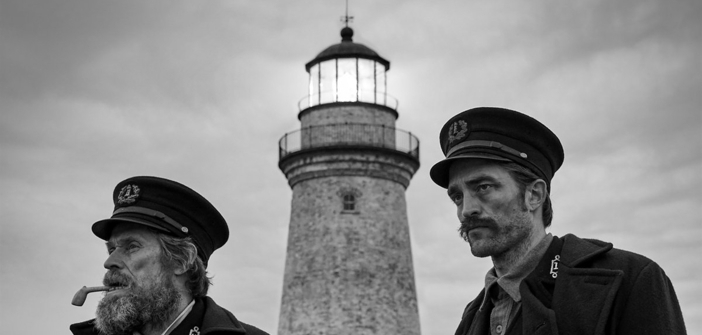Robert Eggers accompanies two lighthouse keepers on an islet at the end of the 19th century in “The Lighthouse.” The American filmmaker plays with the codes of cinema to create a film with an atmosphere as dark as its color.
A mysterious lighthouse, a lost island, disastrous weather, and seagulls. This is the setting for four weeks for the old sea dog Willem Dafoe and the landlubber Robert Pattinson before the arrival of their replacements. The two sailors work, eat, drink, and sleep together. They get to know each other. The director crafts from this context a nauseating atmosphere where every word and every act leads to confusion.
The magnificent black and white chromatics instill austerity in a film whose image format has been seldom used since the 1920s and whose film stock can make a blue sky look menacing.
Add to this technical premise the numerous close-ups on the expressive faces, more or less lit, of the actors, and the link to German Expressionist cinema of the same period is just a step away.
The film’s sound atmosphere is crucial.
Its quality permeates the image and immerses the viewer in the setting. The perpetual blaring of the lighthouse alarm gives it a presence all the more significant, as it unnerves with its deep tone. The film veers as much towards horror cinema as it does towards maritime tales to create a new whole. Equally complex. Equally disturbing.
Madness for the characters… and for the audience
The lighthouse is the object of all desires. The old sea dog claims it as his personal property while the young sailor performs the household tasks, sometimes difficult, often thankless, accompanied by the reproaches of his ill-fated companion.
The same battles every day and an increasingly pronounced drinking binge each night form a vicious circle they cannot escape. Their continued alienation leads them to doubt each other’s words and actions.
And the audience starts to doubt as well.
To doubt the characters and the images presented to them. A distance forms from the characters’ identity question. Who are they? Are they who they claim to be? From the situation emerges an unhealthy ambiguity to which the director adds fantastical elements to obliterate the viewer’s last logical markers and temporal references. That is the strength of “The Lighthouse.”
This lighthouse leaves one perplexed, disturbed, intrigued. No traditional cinema code governs it. It is a true cinematic UFO from which no one emerges unscathed.
Paul Guianvarc’h


